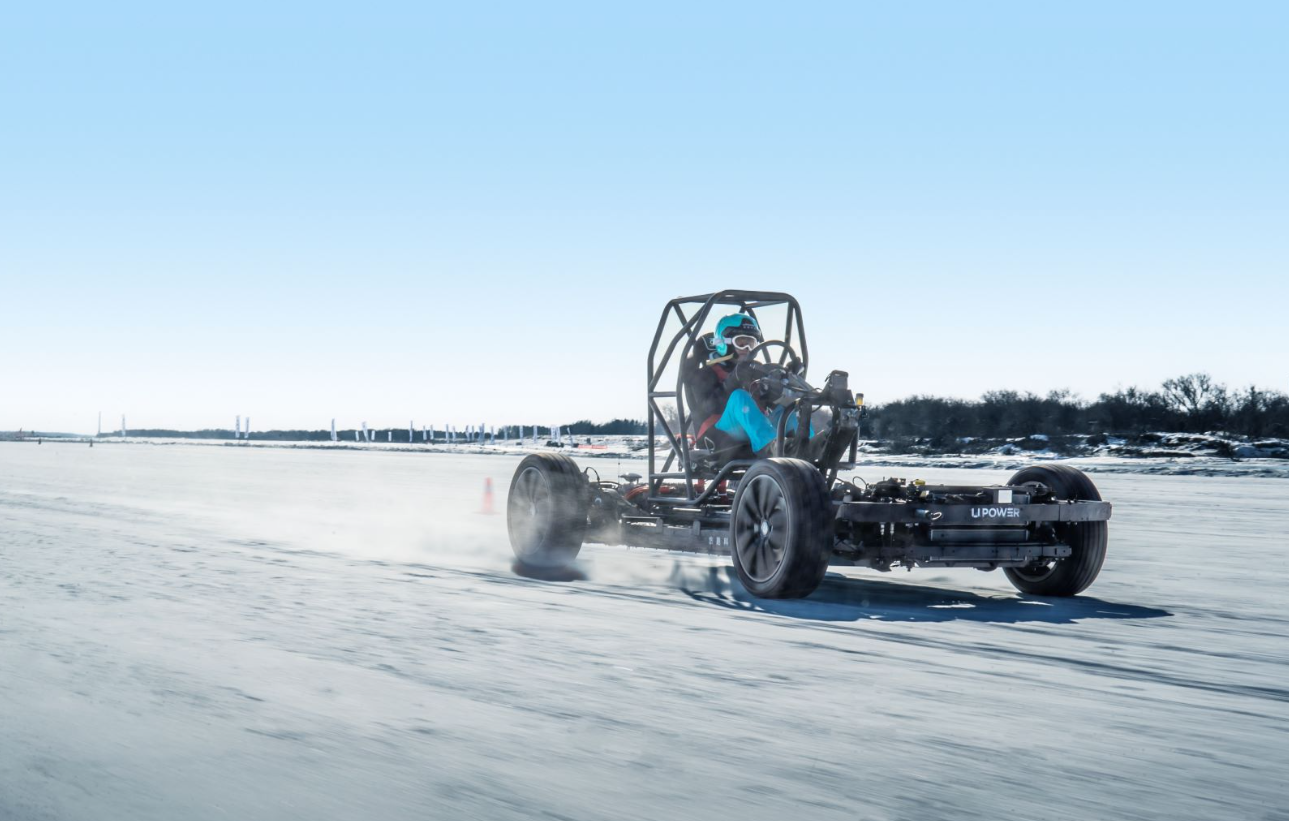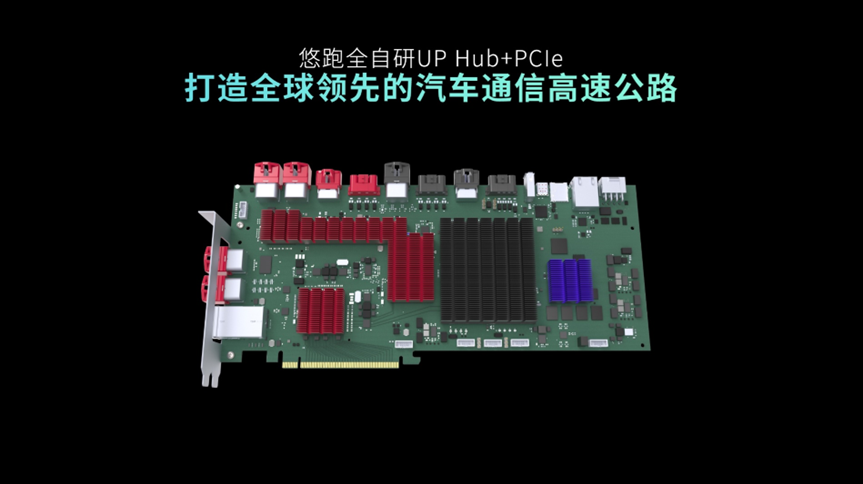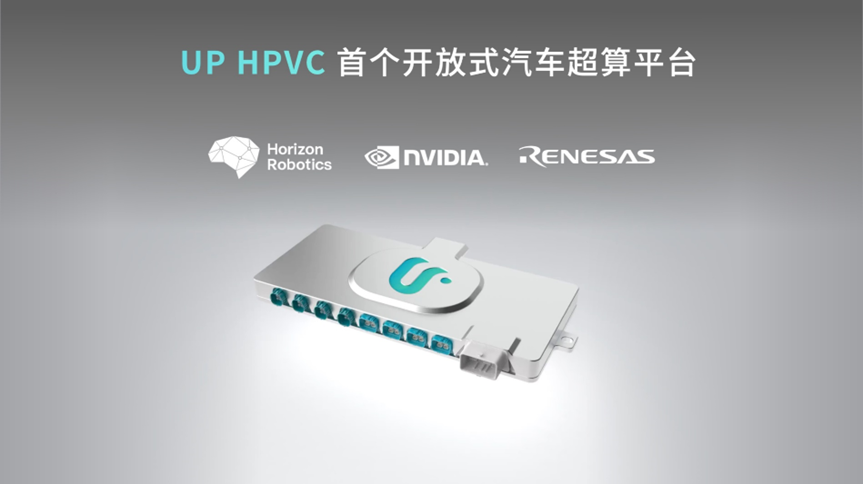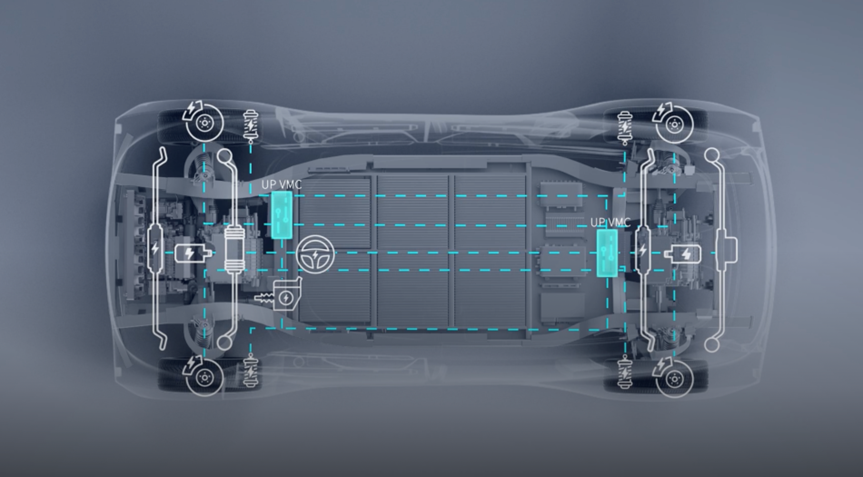Author | Zhu Shiyun
Editor| Qiu Kaijun
“As entrepreneurs, all our opportunities come from ‘others not believing’. If everyone believes, big companies will do it themselves.”
Founder and CEO of Up Motion Technology, Li Peng, told “Electric Vehicle Observer”: “Because they didn’t believe us, we were all in, so we gained a window of one and a half to two years in two years.”
On March 7th, Up Motion Technology released China’s first mass-produced fully controllable skateboard chassis and announced that the first complete vehicle product – Super VAN – will be delivered at the end of the year, and has received domestic and foreign orders; joined hands with the “Off-road Electric Fans” to create an electric off-road series.
This press conference was more than a year after January 2022, when Up Motion released the UP Super Chassis. In this year when the epidemic was enveloping and benchmark company Rivian went public and then slumped, although Up Motion has made many updates, there seems to have been no progress in China’s skateboard chassis subdivision track, as if “lost one year.” There are even more doubts about the feasibility of skateboard chassis.
“I support this technology, but the business logic doesn’t support it,” said Zhao Xin, who is also engaged in skateboard chassis business.
“The technology is reasonable, but reality is very tough,” said Wang Xiao (alias), who has regarded the skateboard chassis as a reserve technology within the company.
Rivian has already experienced the roller coaster from “belief” to “disbelief” in the capital market: from a high of $179 per share in November 2021, it has fallen more than 90% to $14 per share. In China, “Ning Wang” has also seriously started the chassis business.
But Up Motion’s skateboard chassis has its “Chinese characteristics,” can it be commercialized?
Up Motion Skateboard: Software and Hardware Integrated Automotive Operating System
“China missed the operating system of the smartphone era, and now we have the opportunity to make an intelligent electric vehicle operating system.” Li Peng defined Up Motion’s skateboard chassis as a “software and hardware integrated automotive operating system” at the press conference.
“The software” is Up Motion’s self-developed CCCA (Communication, Computing and Control Architecture).
CCCA is conceptually equivalent to the Domain Concentrated Electronics and Electrical Architecture (EEA) that will be widely used in 2023, consisting of the communication network UP Hub (Super Hub) and the computing platform UP HPVC (Super Computing Platform).
UP Hub, as a communication/data transmission architecture, adopts PCIe technology, which integrates the characteristics of high bandwidth of Ethernet and ultra-low delay calculation of CAN bus.
UP HPVC is a chassis + intelligent domain controller. It is worth noting that UP HPVC independently developed by YOUPAO does not lock any chip. It has reached cooperation with chip suppliers such as Horizon Robotics, NVIDIA and Renesas, and can provide products with different computational power levels.
Li Peng said that "YOUPAO is doing the control layer composed of system, communication and underlying software. By providing standardized communication, API interfaces are provided to the upper layer (middleware, application layer, etc.)".
Based on system architecture and standardized communication, YOUPAO's communication architecture and computing platform have plug-and-play capabilities to meet the intelligent level requirements of different vehicle models.
The "hard" part is YOUPAO's independently developed integrated motion domain control technology (UP VMC), as well as the full line control skateboard chassis product that has been implemented in hardware.
UP VMC can be regarded as the "middleware" between the upper-level ADAS system and the lower-level actuator. Based on wired control technology, UP VMC coordinates and controls the entire chassis system including steering, braking, driving, and suspension after receiving the commands from the ADAS system, which can realize deep driving mode changes such as "one-click ice drifting".
Compared with the chassis system cooperated with Tier 1 and OEMs, Li Peng said that YOUPAO skateboard chassis has three characteristics:
-
It is a standardized, mass-produced product that can provide customers with consistent and stable products.
-
It is closer to the young consumer group and pursues the trend of personalization.
-
It is an entry point for users to experience YOUPAO’s high-level technology capabilities.- The super chassis is a part rather than a group of parts;
-
This part can support configuration-based differentiation, with flexible selection of controller computing power, battery capacity, and motor layout;
-
“The greatest value of this part comes from defining standard interfaces, allowing car manufacturers to implement cross-model configuration iterations more cheaply, quickly, and efficiently.”
The Ultravant built on the skateboard chassis may be sold and delivered through commercial vehicle brands and Ultravant’s own channels at the end of this year.
“Just like Google also makes phones, any company that does underlying operating systems must have its own product form, complete product verification, and make samples for customers,” said Li Peng, referring to Ultravant as well.
Scene Selection Mode: Tier 0.5 for To B
The “sample making” also has Ultravant’s own commercial model. Li Peng calls it “scene selection”. Similar to Huawei’s selection model, it can be summarized as connecting product definition and terminal (user, scene) together.
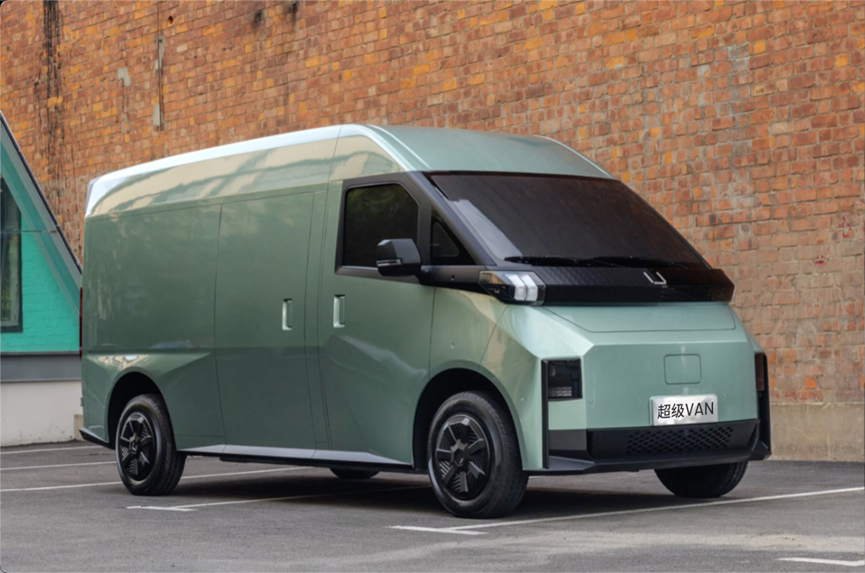
Specifically, Ultravant currently has two cooperation models.
One is to cooperate with host factories to customize cars based on an understanding of application scenarios. For example, the Ultravant’s body styling is also completed by Ultravant and is directly imported into the host factory’s production line for sale in the host factory’s channel. “This means that they (the host factory) have spent very little money to add a pure electric vehicle to their channel, which is still very cost-competitive in commercial vehicles.”
The second is to cooperate with logistics companies to customize based on more specific scenarios. “Customizing for a specific scenario will update the (product) experience of this scenario. But because my R&D costs are extremely low, the amortization has not increased. So the competitive advantage of the customized car model is still there.”
Li Peng emphasized that Ultravant does not do C-end and aspires to be a big B-end company serving big clients.
“We can separate some systems that are planted in the skateboard chassis for cooperation, but it must not be based on single-component cooperation, and it must not be based on engineer service customization development cooperation…Today, all Tier 1 suppliers in the automotive industry are my Tier 1, I don’t sell my engineer’s time, I sell the product of this system.”
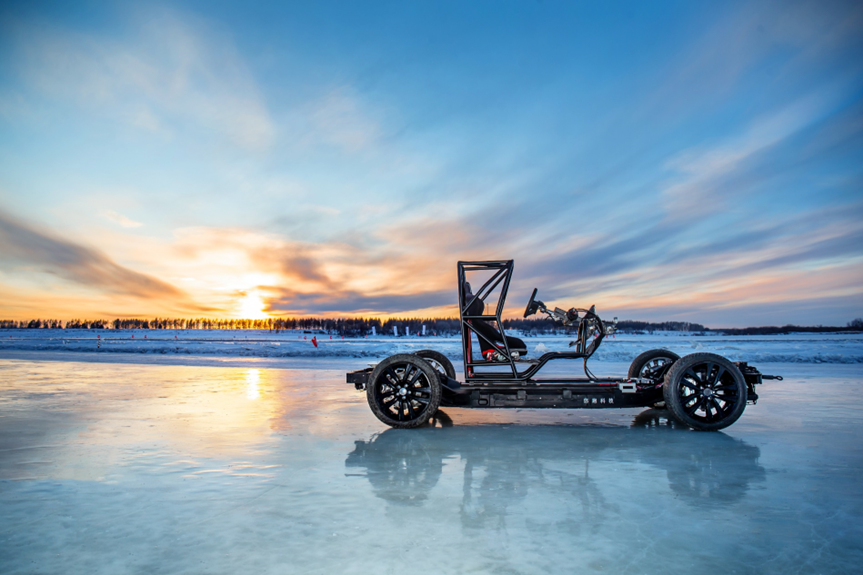
According to Li Peng, the era of intelligent electric vehicle provides a natural opportunity for the commercialization of skateboard chassis.
Firstly, just like smart phones, the differentiation of cars is reflected in the definition of services in the upper space;
Secondly, hardware standardization in the era of electrification has become the foundation for pre-integrated electrification. However, the rapid innovation of battery and motor technologies, as well as the limitations of skateboard chassis wheelbase rigidity, make it extremely difficult for a single automaker to develop a skateboard chassis and achieve economies of scale.
“So our value is the standardization of quantity. Due to standardization, research and development costs are low, and adaptation costs are low. I have a large procurement volume because I’ve installed a lot of different car models on top of it.”
Thirdly, few automakers have the integrated capabilities of whole vehicle, electronic and electrical architecture, and software architecture, which provides sufficient market space for URrun.
URrun VS NIO, Rivian
So why did Rivian encounter a cold reception in the capital market, and why is the skateboard chassis concept that was hot in 2021 seldom mentioned in 2023?
Li Peng said that URrun, Rivian, and Ningde Times’ skateboard chassis cooperation project have huge differences in product form, business model, and ecological environment.

In terms of product technology, US companies such as Rivian and Canoo are still in the stage of pre-integrated electrification, while URrun has built a software architecture platform that includes complete communication, calculation, and control on the basis of standard hardware, to adapt to the intelligentization needs of the Chinese market.
And the cooperation between Ningde Times, VinFast in Vietnam, and NIO in China is exclusive at least in terms of batteries, while URrun has greater flexibility;
In terms of business model, due to the absence of the “qualification to build cars” restriction in the US, skateboard chassis companies can produce products and use their own brands; Ningde Times mainly values the opportunity for battery and chassis integration; URrun adopts the Trie 0.5’s large B-end mode to serve a wide range of Chinese and foreign car manufacturers, new car-making forces, and technology companies as customers.
In terms of industry ecology, skateboard chassis companies in the United States face giant oligopolies in both upstream and downstream industries of the supply chain. Zhao Xin also stated: “The reason why Rivian cannot do well is due to the constraints from the downstream supply chain, and it actually cannot make any decisions.”
Unlike the highly centralized supplier and automaker ecology in the United States, the upstream supply chain in China not only has numerous players, but also has flexible and highly mature business cooperation models that comply with global standards. Downstream customers, such as automotive brands, internet companies, and scene users, provide an ecological foundation for YouPao to become a system integration supplier.
“Rivian cannot come to China and gain support from the world’s largest electric vehicle market and the best global supply chain, which will inevitably lead to poor delivery. Therefore, it is not a problem with the technology of the skateboard chassis, but there are serious problems with everyone’s business operations. In my opinion, only China can do this,” said Li Peng.
Can YouPao be commercialized in China?
However, even in China, the “peers” are still skeptical about whether YouPao can completely commercialize the skateboard chassis business model.
Firstly, there is a problem with laws and regulations. Currently, models that use completely electronic control and transformation systems are not compliant in China. Infiniti’s overseas models that use electronic control transformation still added a steering column in China.
Regarding this, Li Peng said that although there are still mechanical parts in the car, “we can achieve the user value brought by electronic control, and the adjustment of the brakes can be achieved through software definitions, which is my value.”
Secondly, there is a question of product form. Wang Xiao believes that the skateboard chassis is a non-load-bearing body form, so it naturally fits commercial vehicles. However, larger-scale passenger cars use load-bearing body forms. Directly using the skateboard chassis as a “part” with the existing body system results in uneconomical chassis mechanics, while thoroughly transforming the body incurs huge costs.
More importantly, automakers have demands for mastering core technologies.
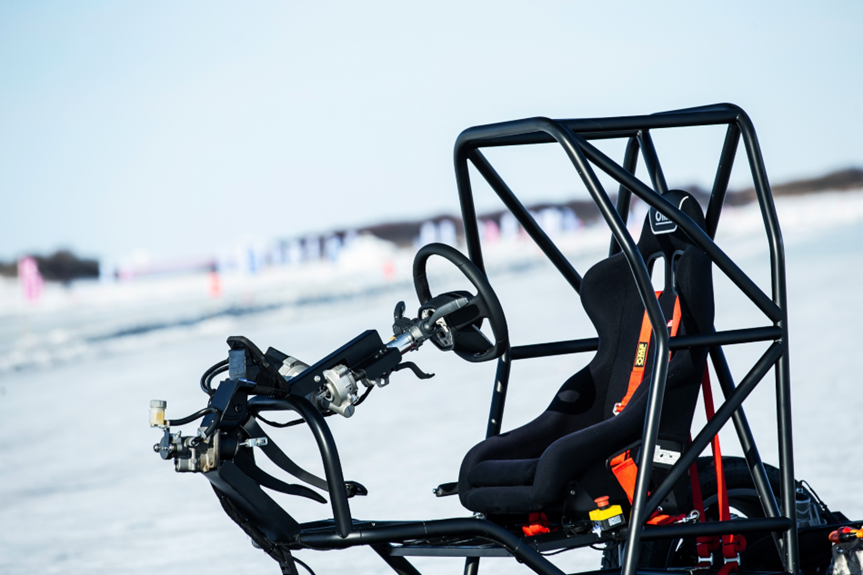
Li Peng stated in the interview that some systems in the skateboard chassis can be taken out and turned into products. This could be upper-layer EEA and domain control modules, which are also the core capabilities that automakers are currently building in their transformation towards intelligentization.“`
Volkswagen E3 architecture and VW.OS, Mercedes-Benz MB.OS, SAIC Galaxy full-stack solution, Changan SDA architecture, GAC Aion Star Spirit architecture, and Geely Galaxy OS are all trying to create a unified electronic and electrical architecture and a generalized operating system suitable for all group brands.
Not to mention Tesla and XPeng Motors who have been exploring centralized electronic and electrical architecture for two or three years.
“Objectively speaking, skateboard chassis is beneficial to the car companies, but it is difficult for the whole vehicle company to accept such practices in terms of commercialization,” Wang Xiao, who has also explored the skateboard chassis route, once tried to promote similar integrated technology services to passenger car OEMs, but failed.
“Now capital tends to be industrial capital. It is quite difficult to do financing and VC, unless there is only one in the field. So if XPeng Motors has emerged, other companies should not count on it,” Zhao Xin said.
In 2022, XPeng Motors completed its B-round financing and submitted an IPO application to the US Securities and Exchange Commission at the end of last year. “Moreover, in an interview, Li Peng also mentioned that the A-share market has provided financing opportunities for technology companies.”
“As a startup, we focus mainly on gross profit and positive operating cash flow,” Li Peng said. “Professionalism brings efficiency. When the industry returns to the commercial nature, the solidified automobile industry structure will change with changes in cost structure. Today’s form of car factories will definitely be optimized.”
“`
This article is a translation by ChatGPT of a Chinese report from 42HOW. If you have any questions about it, please email bd@42how.com.
